
Growing pumpkins in your garden can be incredibly rewarding, especially if you enjoy the taste of homemade puree for pies, soups and even pasta sauce. But if you get a bumper crop or have limited space, it doesn’t take long before you sacrifice a lot of freezer space for orange blocks of frozen pumpkin.
Luckily, with a food dehydrator, you can make pumpkin powder. Not only can you use it just like fresh puree, but it takes up less space and is a breeze to work with.
Pumpkin powder, also known as pumpkin flour, is an excellent way to preserve your annual bounty of everyone’s favorite fall gourd.
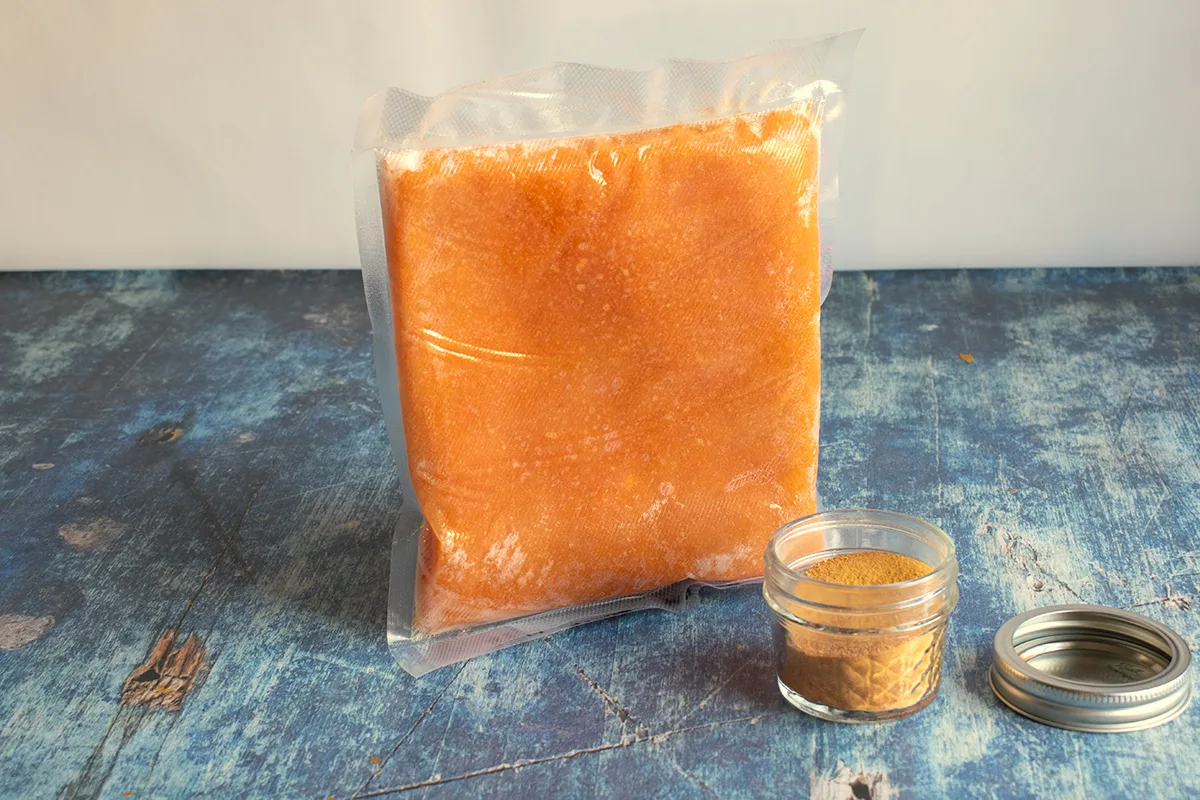
If you’ve frozen homemade pumpkin puree, you know how quickly it can take over your freezer. Pumpkins are about 90% water, so when you think about it, storing it as frozen puree doesn’t make a lot of sense. You’re making large pumpkin ice cubes and taking up all that precious freezer real estate with excess water.
By dehydrating the pumpkin, you’re removing the water and leaving behind the flesh. In effect, you reduce its volume by about 90% when you dehydrate the puree and powder it. The lost water is easily added in again when you need to make puree. In the end, the finished pumpkin powder takes up about 1/10 of the room that the puree would.
That’s some serious space gained by switching preservation methods.
And there’s no chance of spoilage due to power loss. Nor does the powder need a constant supply of electricity to preserve it like freezing. This tasty powder can be stored in an airtight jar in your pantry for up to a year.
Whenever you need it, you’re only fifteen minutes away from reconstituted pumpkin puree.
To begin with, you will need to roast your pumpkin and make puree. (If you’ve already done that, you can skip ahead.)
How to Roast a Pumpkin & Make Puree
Preheat your oven to 350 degrees F.
Wash any dirt off your pumpkin and snap off the stem. (I usually give the stem a solid whack against the edge of the counter, and it pops right off.)
Cut the pumpkin into quarters or smaller wedges if it’s a large squash.
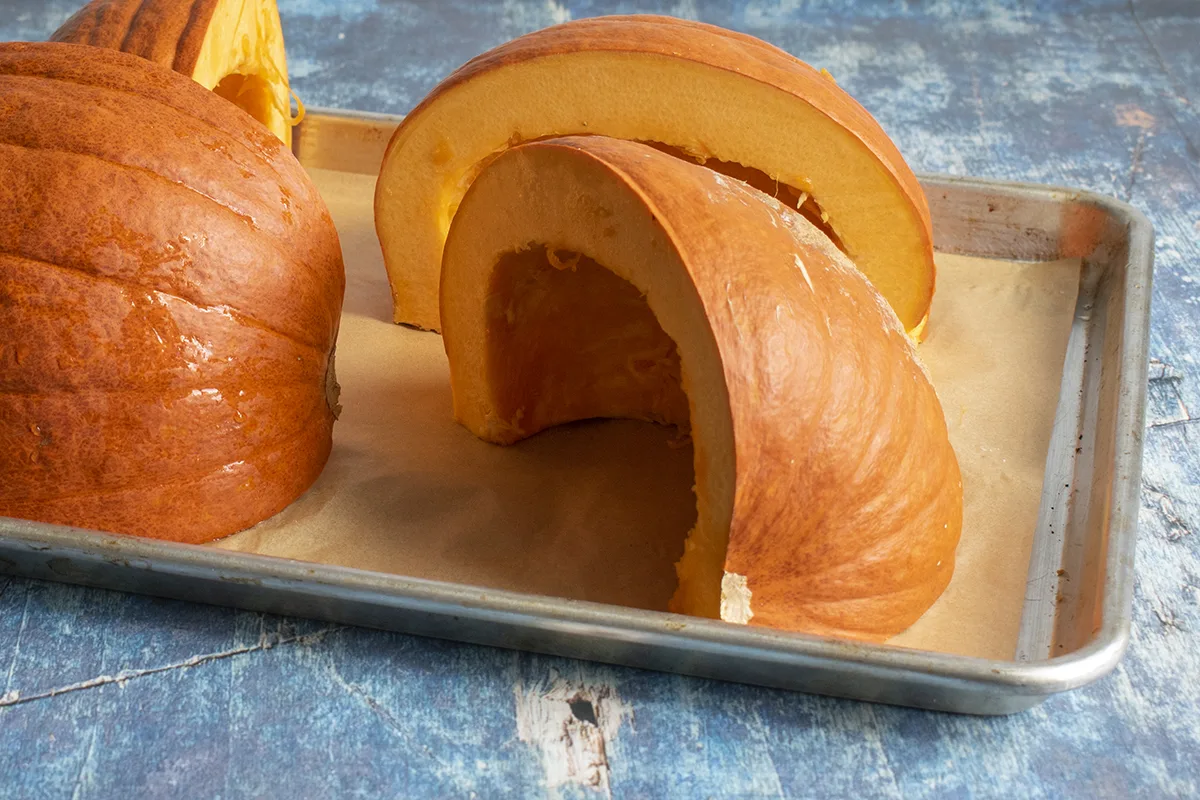
Place the pumpkin wedges onto a parchment-lined baking sheet and bake for 30-40 minutes. You should be able to pierce the skin easily with a fork. Let the pumpkin cool before scooping it out of the skin with an ice cream scoop.
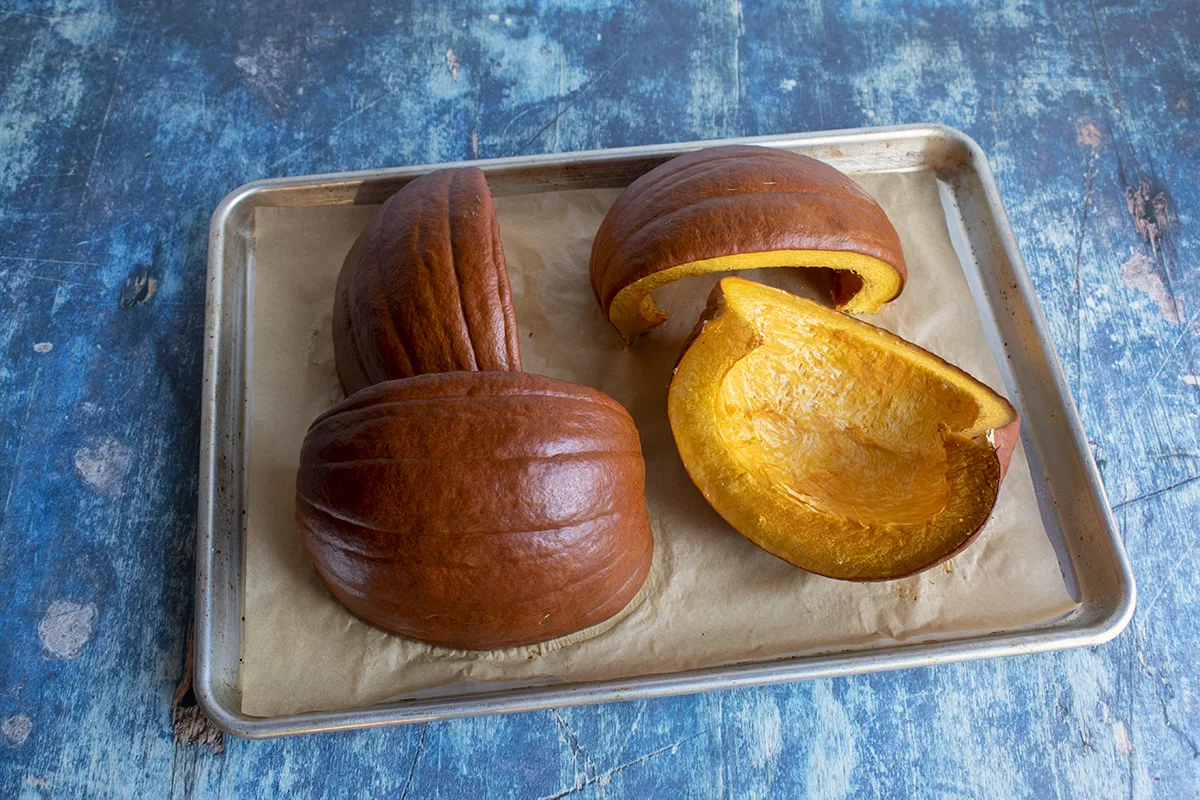
Process the baked pumpkin in small batches in a blender or food processor until it’s smooth.
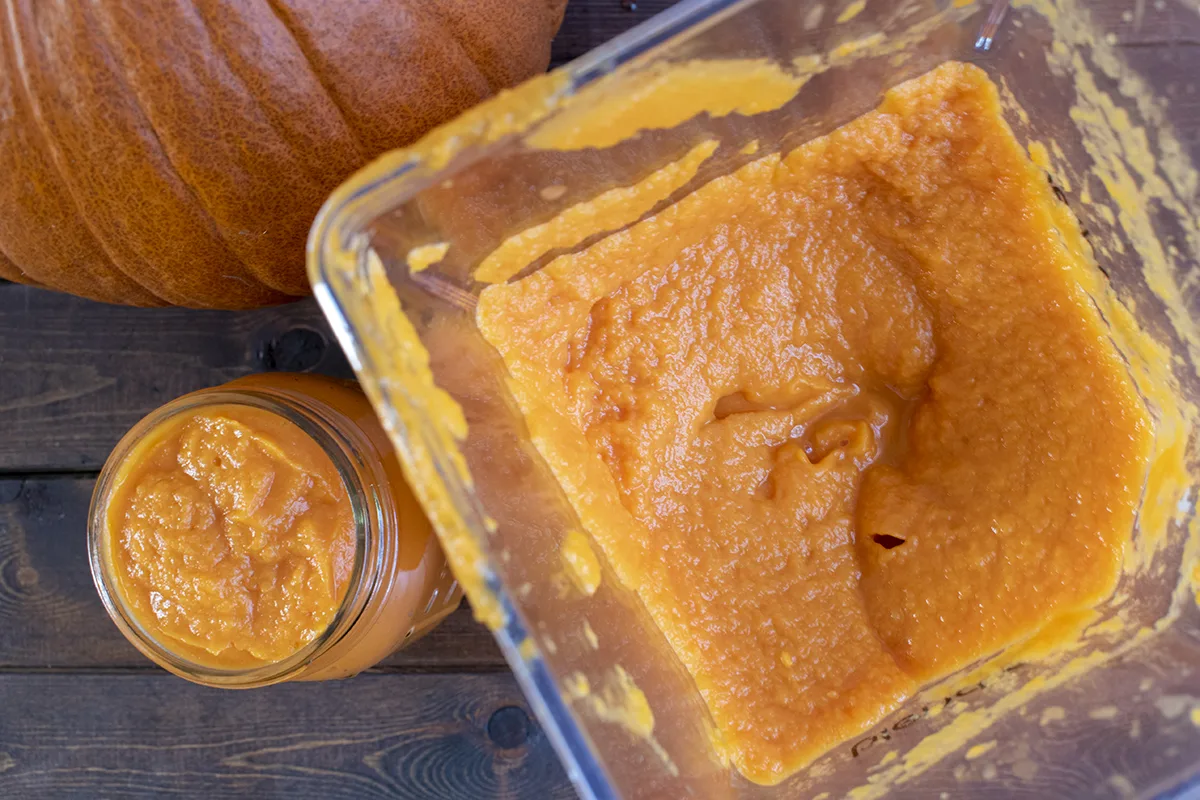
Now on to turning that golden puree into powdered pumpkin.
You can either spread a thin layer of pumpkin puree on a sheet of parchment paper before placing it on the shelves of your dehydrator, or if your particular machine comes with fruit leather trays, you can spread the pumpkin puree directly on those.
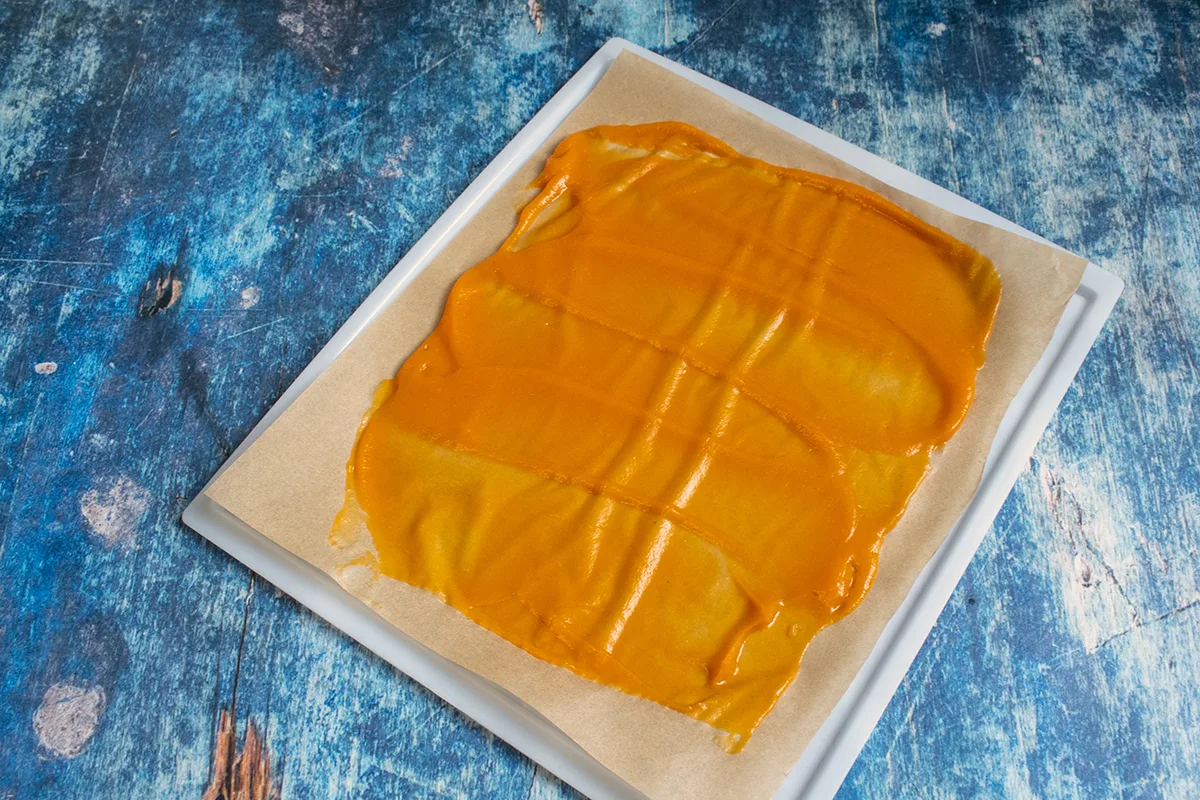
Dehydrate the puree for 8-10 hours at 125 degrees F. When it’s finished, let it cool completely. You should have nearly paper-thin pumpkin bark that crumbles easily.
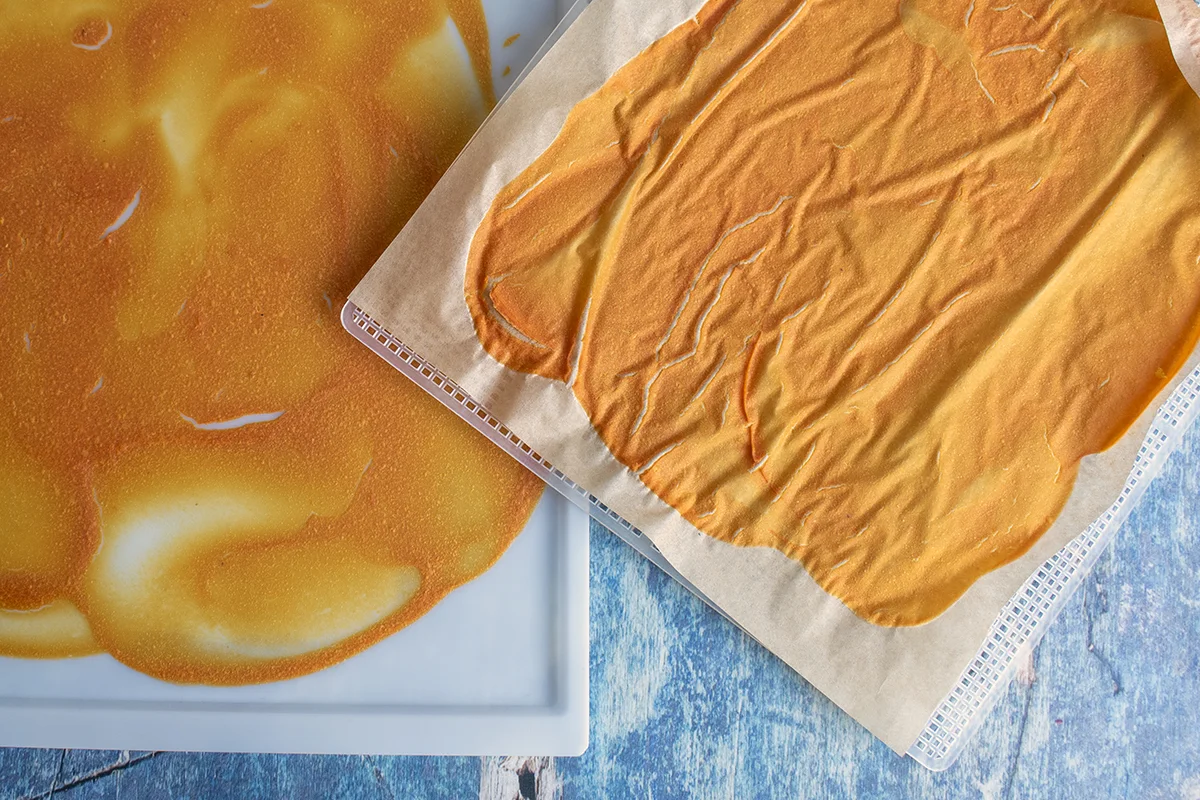
If you use the fruit leather sheets provided with your dehydrator, you may notice the finished pumpkin is slightly bendy. It will turn into a gummy, sticky mess if you try to make powder with it. To dry out the pumpkin leather completely, break it into smaller pieces and place it on a metal baking sheet in a 200-degree F oven for 15 minutes, then turn the oven off and allow the pieces to cool completely in the oven.
Your pumpkin will be crumbly and dry at this point.
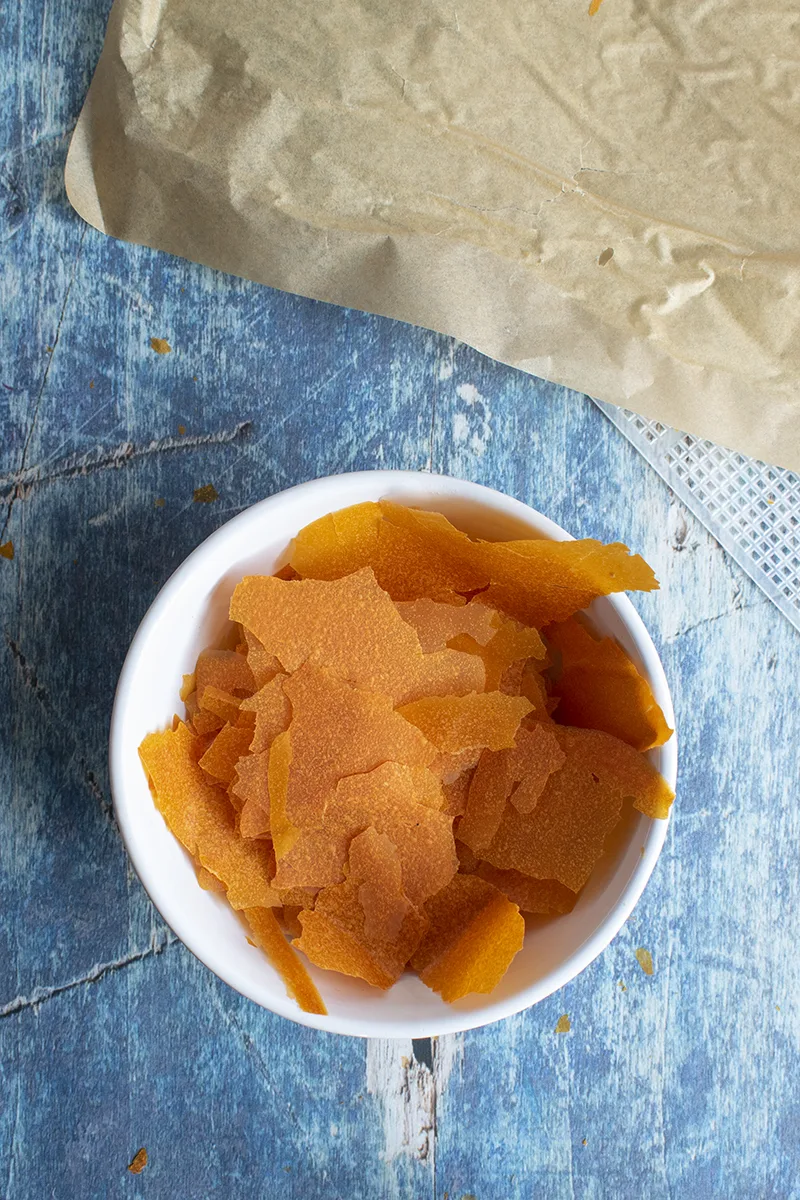
To powder the pumpkin, use a blender, food processor or coffee grinder (also marketed as a spice mill). Any of these will work well, but I find that having a dedicated coffee grinder does the best job. I have one that’s never seen a single coffee bean but is used whenever I need to make powdered anything.
It might be easiest to start with a blender and then transfer the resulting pumpkin flakes to the coffee grinder to get a fine powder.
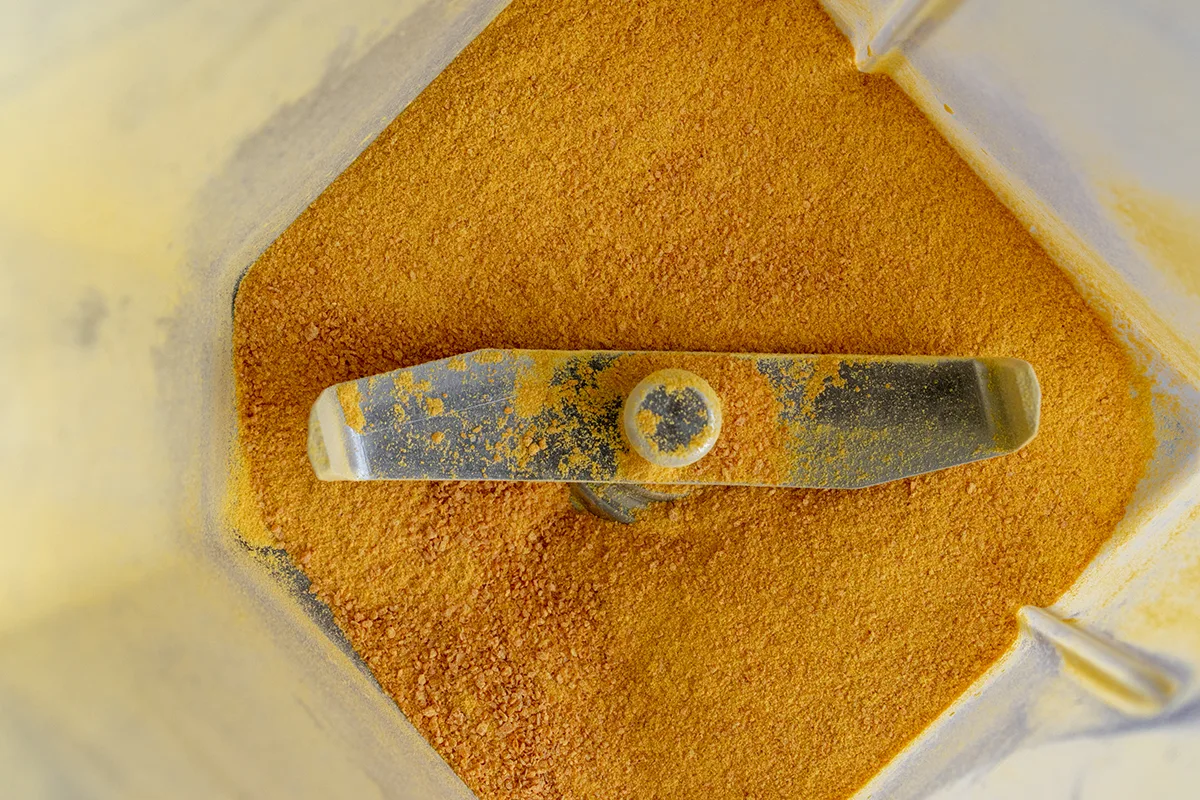
While processing your pumpkin, it’s a great time to add spices to create custom powdered pumpkin blends.
Pumpkin spice? Add in pie spices. Curried pumpkin? Add in curry powder. Hot and Spicy pumpkin? Blend it with powdered ginger and cayenne pepper.
Spiced pumpkin powder blends make excellent soups and are wonderful stirred into coffee, pudding or pie. Try some in your morning smoothie or yogurt for an extra flavor boost and nutritious pumpkin.
To rehydrate your pumpkin, use a ratio of four parts of boiling water to one part pumpkin puree (4:1). A good place to start is one cup of boiling water with a ¼ cup of pumpkin powder. Stir the two together well and cover the bowl. Let it sit for fifteen minutes to soak up all the water.
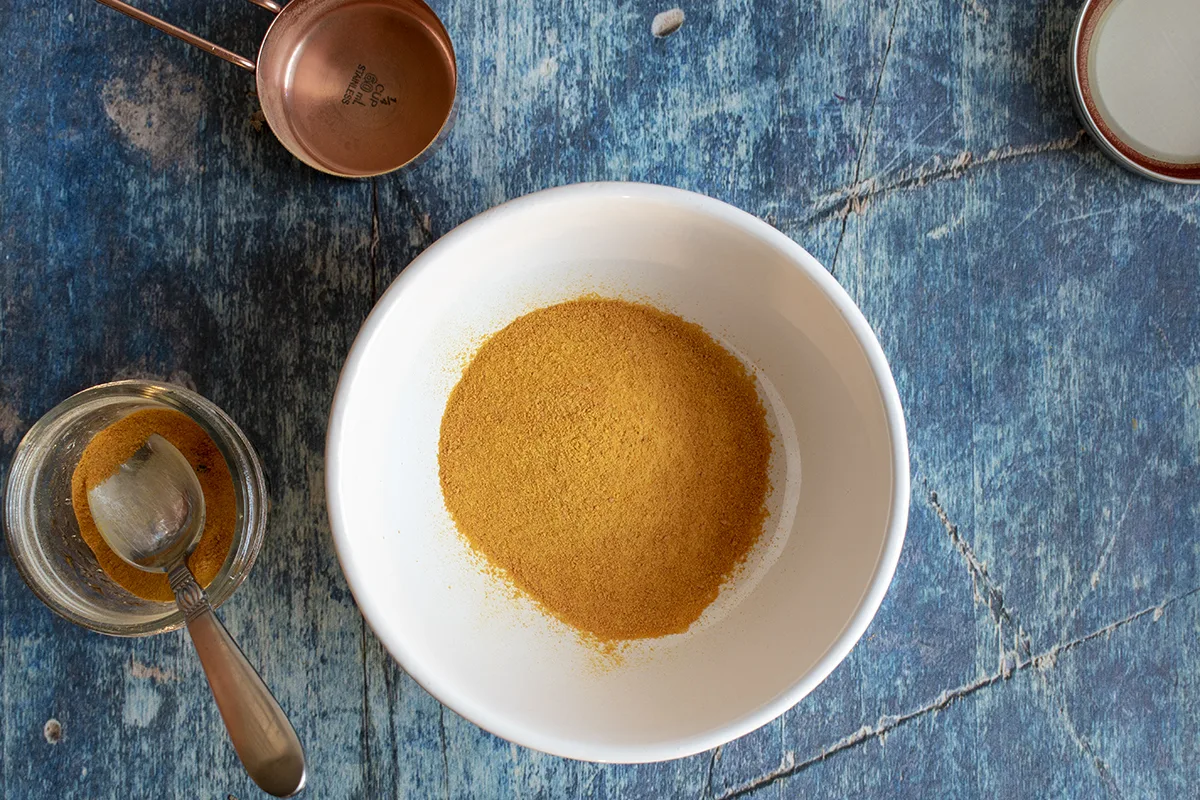
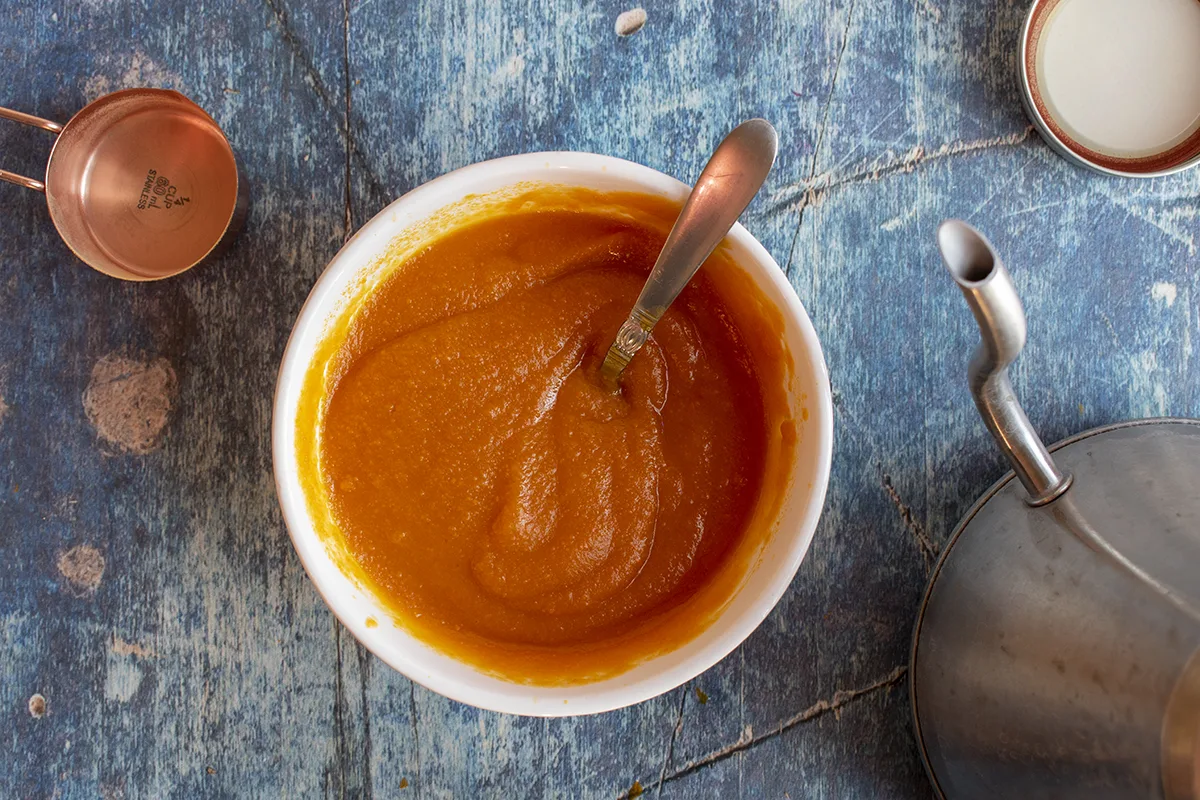
I have to say; I was a bit skeptical of preserving and storing my pumpkin this way until the first time I rehydrated it. Sure, it saved space, but would it be as nice as my frozen puree?
Needless to say, I was blown away by the results. Yes, you should let the powder soak up the water for fifteen minutes, but almost as soon as I began stirring the water and powder together – poof! There was my perfect pumpkin puree.
Pumpkin powder is easy and delicious and frees up precious freezer space for things like meat or, more importantly, ice cream. Oooh, I’m going to use some pumpkin powder to make ice cream!
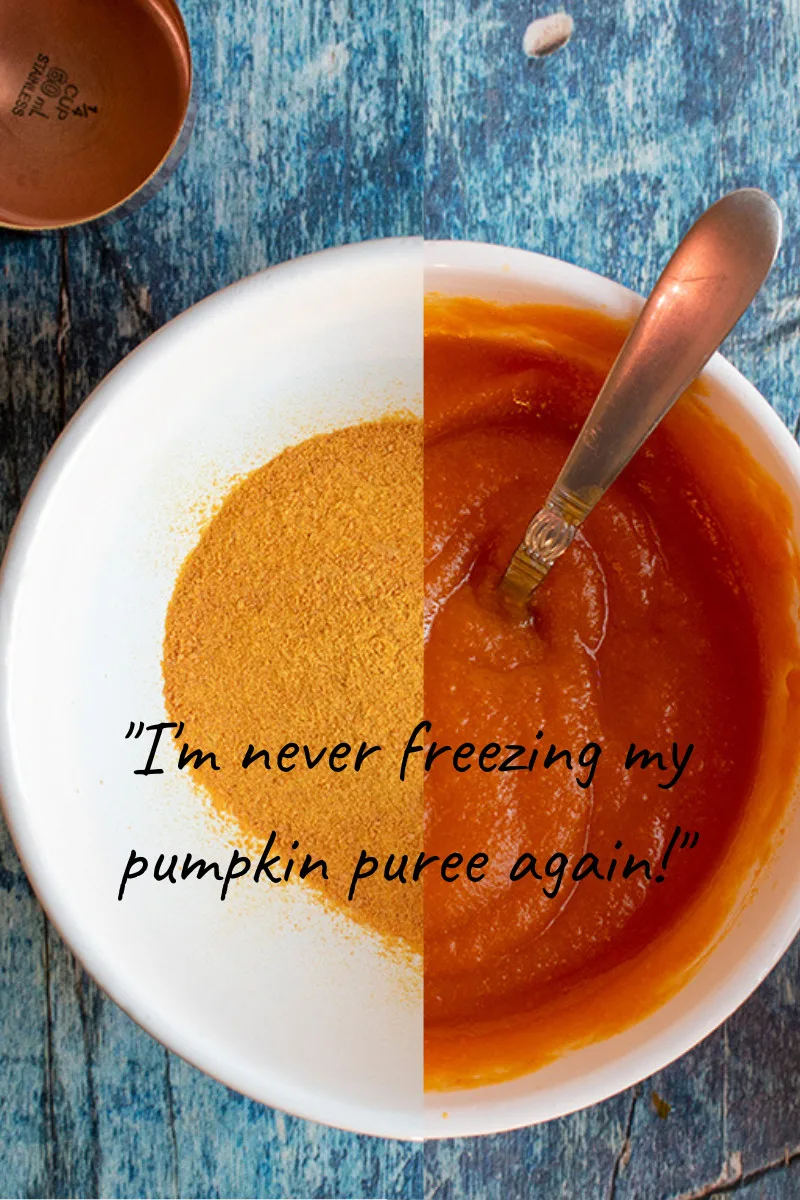
Here are a few other ways to use pumpkin powder:
- Stir a small amount into your coffee
- Add some to your morning smoothie
- Reconstitute two teaspoons and make a brightening facial mask
- Add pumpkin powder to muffin, cookie and cake recipes for bigger pumpkin flavor
- Create quick and easy soups in minutes
- Reconstitute pumpkin powder with milk or cream for an easy and delicious pasta sauce
- Use pumpkin powder to make pumpkin pancakes and waffles
- Whip up a batch of easy slow-cooker pumpkin butter
- For even more ideas and tasty pumpkin dishes, click here.
Pumpkin powder has limitless uses, and you don’t have to stick with pumpkin. All of your winter squash purees can be dehydrated into powder for a whole pantry full of your favorite winter squash in powder form.
While you’ve got your dehydrator out, why not make powdered ginger and onion powder? And make sure you don’t have a dehydrator that could melt – like my old one.

Get the famous Rural Sprout newsletter delivered to your inbox.
Including Sunday musings from our editor, Tracey, as well as “What’s Up Wednesday” our roundup of what’s in season and new article updates and alerts.

